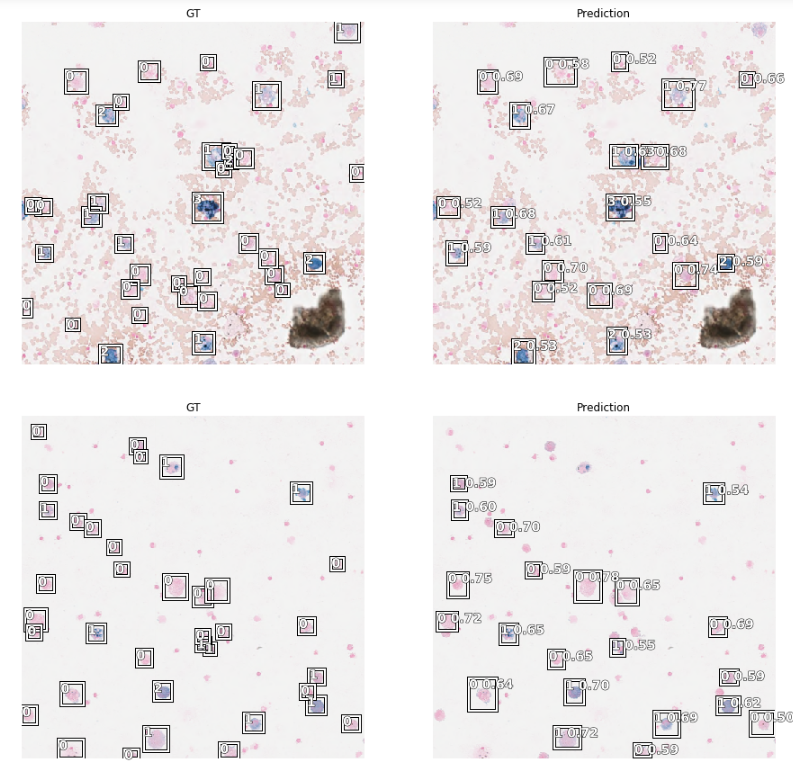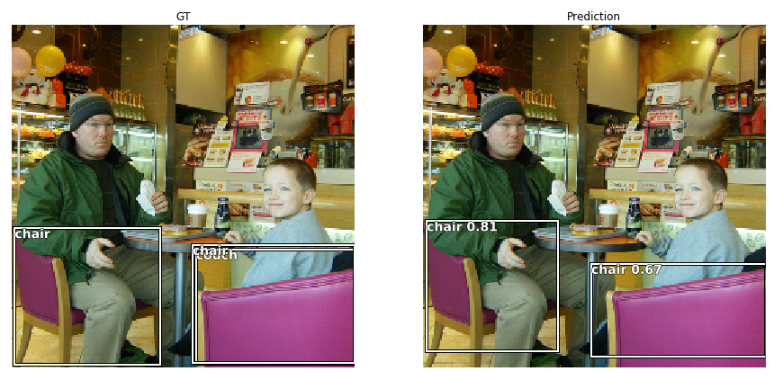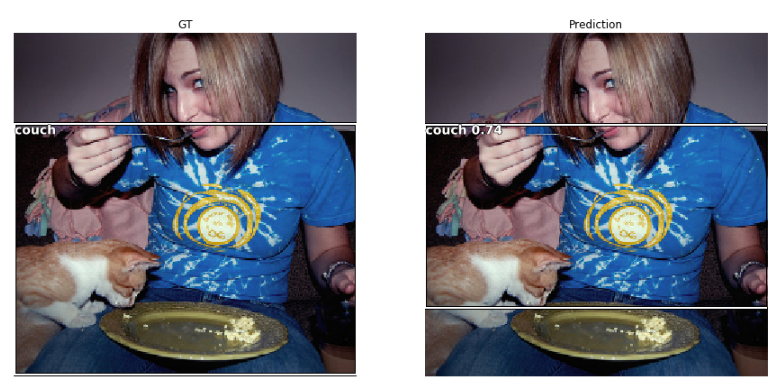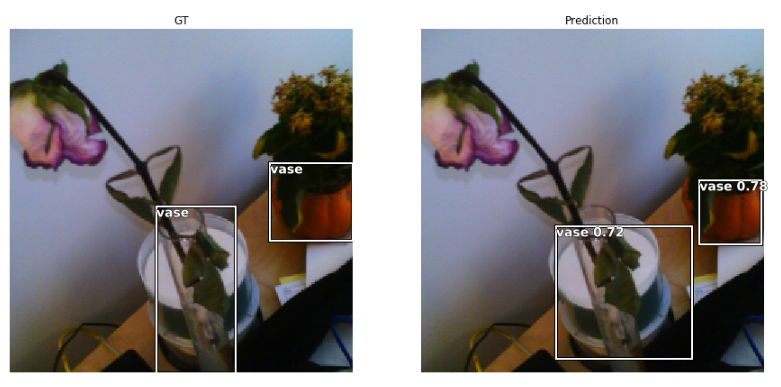Some experiments with object detection in PyTorch and FastAi. This repo is created for educational reasons and to get a deeper understanding of RetinaNet and object detection general. If you like it, please let me know, if you find any bugs or tips for improvements also.
pip install object-detection-fastai
Test: Coco Colab
This paper describes the EXACT-Server in-depth, EXACT enables you to annotate your data and train an object detection model with this repository. Please cite if you use this tool in your research:
Marzahl et al. EXACT: A collaboration toolset for algorithm-aided annotation of almost everything
@misc{marzahl2020exact,
title={EXACT: A collaboration toolset for algorithm-aided annotation of almost everything},
author={Christian Marzahl and Marc Aubreville and Christof A. Bertram and Jennifer Maier and Christian Bergler and Christine Kröger and Jörn Voigt and Robert Klopfleisch and Andreas Maier},
year={2020},
eprint={2004.14595},
archivePrefix={arXiv},
primaryClass={cs.HC}
}
# Old imports:
from helper.object_detection_helper import *
from loss.RetinaNetFocalLoss import RetinaNetFocalLoss
from models.RetinaNet import RetinaNet
from callbacks.callbacks import BBLossMetrics, BBMetrics, PascalVOCMetric
# New imports
from object_detection_fastai.helper.object_detection_helper import *
from object_detection_fastai.loss.RetinaNetFocalLoss import RetinaNetFocalLoss
from object_detection_fastai.models.RetinaNet import RetinaNet
from object_detection_fastai.callbacks.callbacks import BBLossMetrics, BBMetrics, PascalVOCMetricThe basline for this notebook was created by Sylvain Gugger from FastAi DevNotebook. Thank you very much, it was a great starting point and I'm a big fan off your work.
[x] Deep Learning-Based Quantification of Pulmonary Hemosiderophages in Cytology Slides
[x] Coco Metric at train time via callback
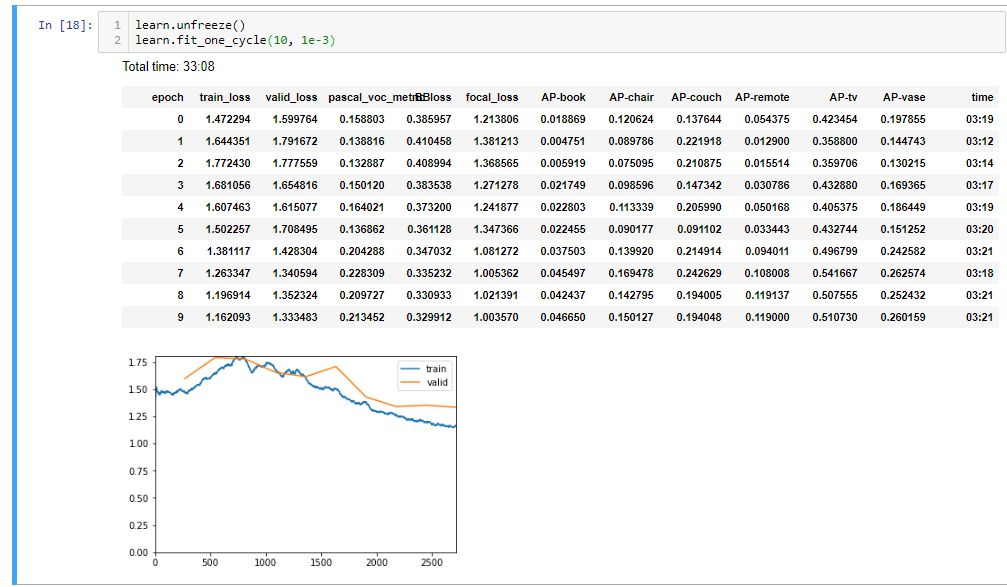 [x] Flexibility
[x] Flexibility
# use the feature map sizes 32,18,8,4 with 32 channels and two conv layers for detection and classification
RetinaNet(encoder, n_classes=data.train_ds.c, n_anchors=18, sizes=[32,16,8,4], chs=32, final_bias=-4., n_conv=2)
'''
(classifier): Sequential(
(0): Sequential(
(0): Conv2d(32, 32, kernel_size=(3, 3), stride=(1, 1), padding=(1, 1))
(1): ReLU()
)
(1): Sequential(
(0): Conv2d(32, 32, kernel_size=(3, 3), stride=(1, 1), padding=(1, 1))
(1): ReLU()
)
(2): Conv2d(32, 18, kernel_size=(3, 3), stride=(1, 1), padding=(1, 1))
)# use the feature map sizes 32 with 8 channels and three conv layers for detection and classification
RetinaNet(encoder, n_classes=data.train_ds.c, n_anchors=3, sizes=[32], chs=8, final_bias=-4., n_conv=3)[x] Debug anchor matches for training.
On the left image we see objects that are represented by anchors.
On the right objects with no corresponding anchors for training.
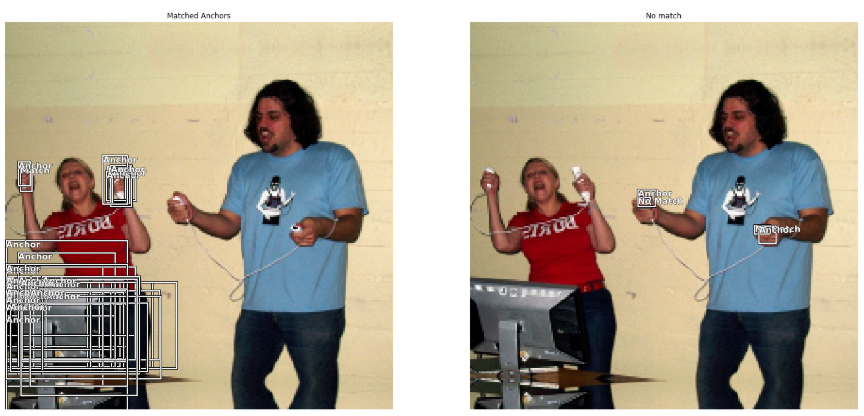 The size of the smallest anchors should be further decreased to match the small objects on the right image.
The size of the smallest anchors should be further decreased to match the small objects on the right image.

